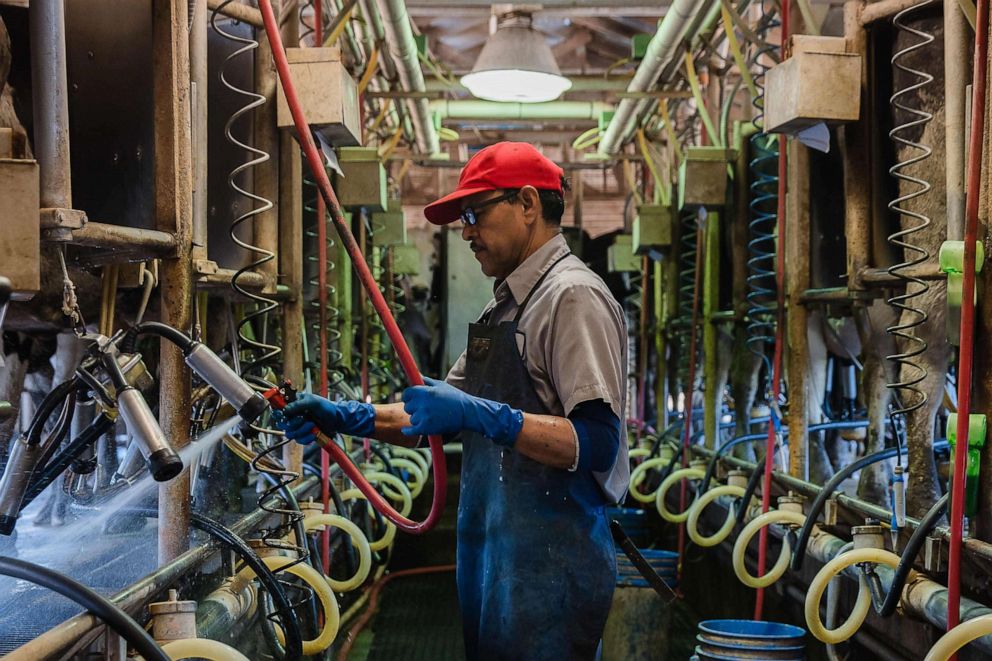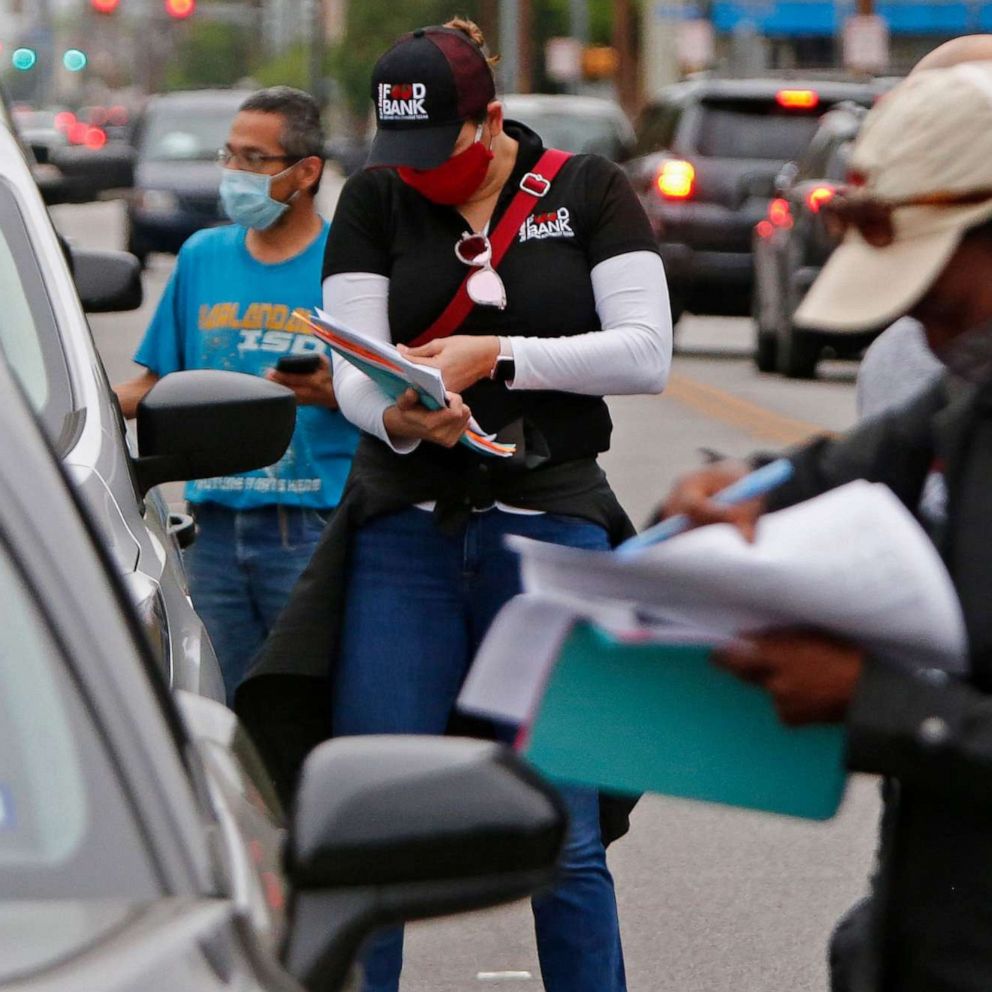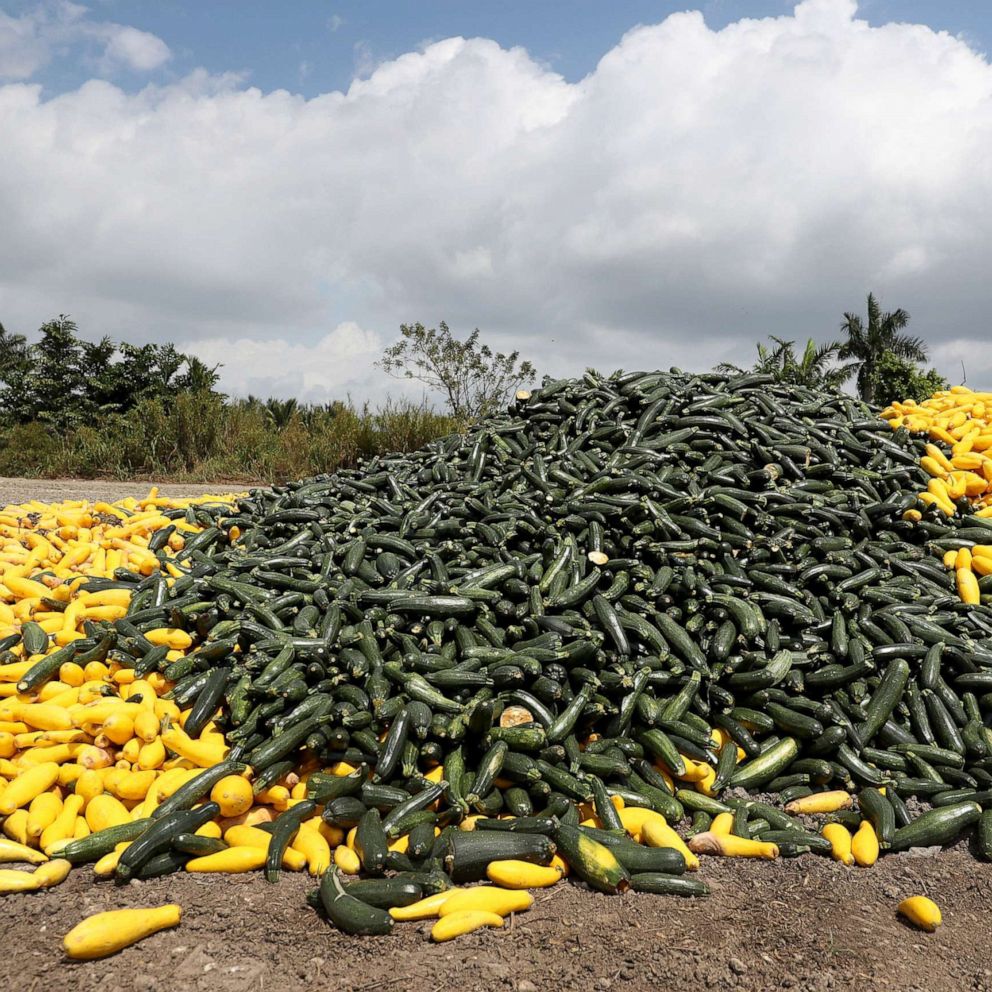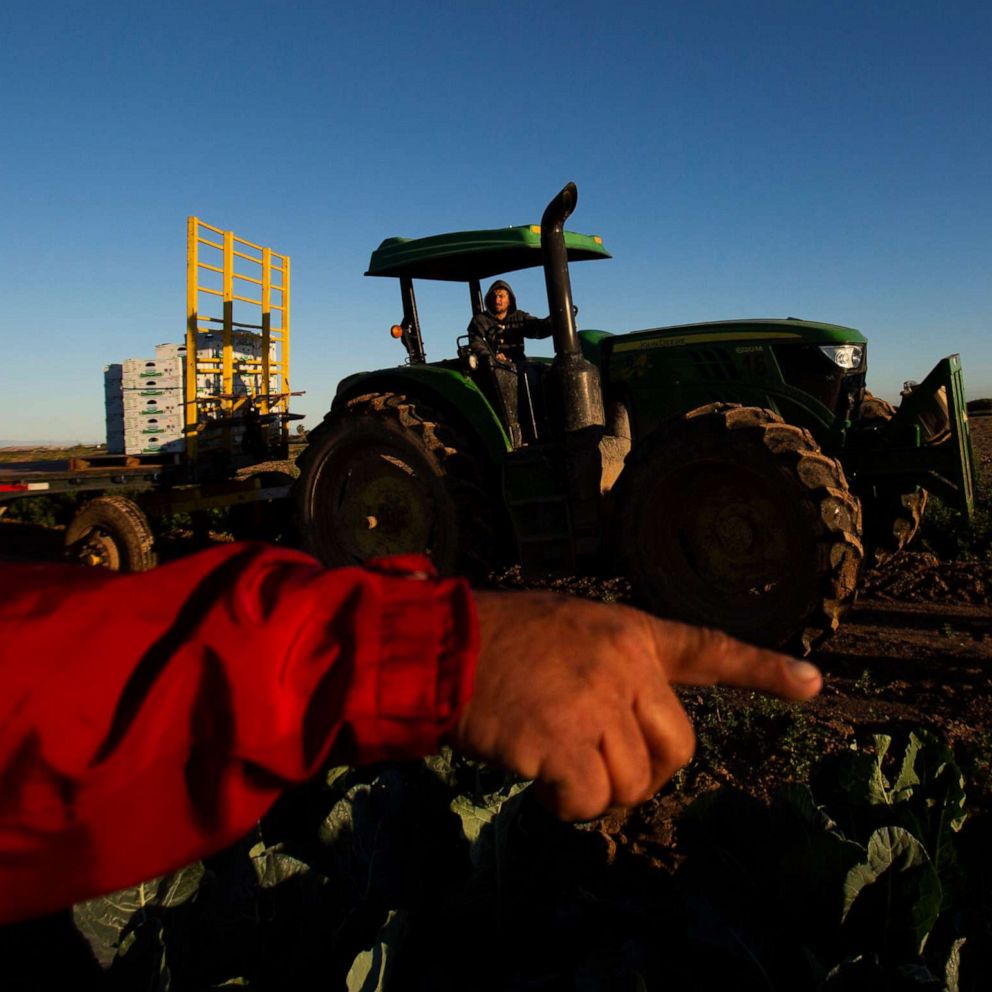USDA to try 'out of the box' solution to get food from farmers to food banks
Farmers and food banks have struggled with disruptions from coronavirus.
The Trump administration will spend $19 billion on a relief program for farmers struggling during the novel coronavirus pandemic, including a new approach to send billions of dollars of agricultural products to food banks and other organizations around the country.
“Our farmers, ranchers, we have, these are great people. Great Americans. Never complain. They never complain. They just do what they have to do. The program will include direct payments to farmers as well as mass purchases of dairy, meat and agricultural produce, to get that food to the people in need,” President Donald Trump said at Friday night’s briefing.
Agriculture Secretary Sonny Perdue said $16 billion of the program would be in direct payments to farmers who have experienced losses during the pandemic and will spend $3 billion to buy agricultural products. The program will begin by purchasing $100 million a month each in fresh fruits and vegetables, dairy products, and meat products.
Tune into ABC at 1 p.m. ET and ABC News Live at 4 p.m. ET every weekday for special coverage of the novel coronavirus with the full ABC News team, including the latest news, context and analysis.
“Having to dump milk or plow under vegetables ready to market is not only financially distressing, but it's heartbreaking as well to those who produce them. This program will not only provide direct financial relief to our farmers and ranchers. Mr. President, it will allow for the purchase and distribution of our agricultural abundance in this country to help our fellow Americans in need,” Perdue said.
“In recent weeks, we’ve seen, all of us have seen the heroic patriotism of our food supply chain workers that have shown day in and day out, doing the work to serve the needs of fellow Americans,” he said.
Perdue said the plan includes an “out of the box” solution to some of the disruptions in the supply chain by using commercial distributors like Cisco to package bulk products into a “pre-approved box” of dairy, meat and produce products. He said the approach hopes to use those companies’ employees to help take some of the workload from food banks that report they are short on volunteers to help with the incredible demand.

“If you don't mind the pun, this is an out of the box example of what we're trying to do. It is new and different. We've never done this before but in realigning the supply. Much of the conversation you've heard about milk dumping has been to do with the dual processing system we have in this country,” he told reporters on a call Friday night.
He did not directly answer if this was a version of the Harvest Box program the department has proposed in previous budgets, to significant scrutiny from lawmakers, advocates, and food bank operators, and if that will slow down the process.
Sen. John Hoeven, chairman of the Senate Ag Appropriations Committee, released more details on the breakdown of direct payments to farmers. He says payments will account for 85% of farmers and ranchers’ losses between Jan. 1 and April 15, 2020. Perdue said they are pushing to have those relief checks out by the end of May.
Zippy Duvall, president of the American Farm Bureau Federation and a newly announced member of the White House economic advisory board, praised the announcement.

“We’re grateful to President Trump and Agriculture Secretary Sonny Perdue for working together to come to the aid of America’s farmers and ranchers. The coronavirus pandemic forced the closing of restaurants, schools and college cafeterias, causing commodity prices to fall off a cliff and serious disruptions to food supply chains," Duvall said in a statement. "This $16 billion in aid will help keep food on Americans’ tables by providing a lifeline to farm families that were already hit by trade wars and severe weather.
“Farmers and ranchers proudly accept the responsibility of feeding this nation and it's heartbreaking to be forced to dispose of milk and plow under crops of fresh food at a time when others are going hungry. We also appreciate the additional funding from other sources to help deliver food from farms to food banks," he continued. “We look forward to additional details about how the aid will be distributed.”
The nation's largest operator of food banks, Feeding America, also applauded the announcement. Along with the Farm Bureau, the groups have asked the USDA to consider ways to get food directly from farmers to food banks more quickly and expand SNAP benefits to Americans so they can buy food from local retailers. SNAP programs provide nine meals for every one donation provided to a food bank.
What to know about coronavirus:
- How it started and how to protect yourself: Coronavirus explained
- What to do if you have symptoms: Coronavirus symptoms
- Tracking the spread in the U.S. and worldwide: Coronavirus map
“We are still examining the details, but this effort has the potential to be a significant food resource for people facing hunger," Claire Babineaux-Fontenot, CEO of Feeding America, said. "This program is designed to ensure nutritious food from growers and producers makes it on to the tables of our neighbors now when they need it most. We look forward to working closely with USDA on how to most efficiently operationalize the plan in the coming days.”
USDA has taken a number of other actions to expand food assistance including the Pandemic EBT program that provides cash assistance to families, allowing states to operate disaster school lunch programs to distribute meals to families outside of the school setting, and expanding the number of states where SNAP recipients can use their benefits to buy food online.







